 I was recently asked to lead a workshop on humor for the Silver Spring Writers’ Meetup Group and while I’ve been lucky enough to sell my humorous commentaries on NPR or find a publisher to print my fictional riffs like any good writer, reporter, or author the first thing I did was hit the books and research. I know what I know, but there are many out there who know so much more than me. The first thing to keep in mind is the inherent contradiction in humor writing. Humor, like all writing, is hard, but it’s also easy. Every one of us has told a successful joke, provoked a laugh, or relayed a story that others found amusing. How to then take that moment and convert it into funny prose or dialogue proves a bit trickier. It requires writing, rewriting, experimentation, and more rewriting. Like any craft, it requires work and a modicum of talent, but there are tools of the trade that we all can pick up.
I was recently asked to lead a workshop on humor for the Silver Spring Writers’ Meetup Group and while I’ve been lucky enough to sell my humorous commentaries on NPR or find a publisher to print my fictional riffs like any good writer, reporter, or author the first thing I did was hit the books and research. I know what I know, but there are many out there who know so much more than me. The first thing to keep in mind is the inherent contradiction in humor writing. Humor, like all writing, is hard, but it’s also easy. Every one of us has told a successful joke, provoked a laugh, or relayed a story that others found amusing. How to then take that moment and convert it into funny prose or dialogue proves a bit trickier. It requires writing, rewriting, experimentation, and more rewriting. Like any craft, it requires work and a modicum of talent, but there are tools of the trade that we all can pick up.
The event went really well. We laughed, brainstormed and discussed the rules and when and how to break them. Even better, one of our authors, Brian, brought a rubber chicken! For those reading this blog who didn’t get a chance to attend, here are some of the semi-pro-tips discussed:
For me, humor all starts with a Muppet and so I began with a story… because what else would a writer start with!
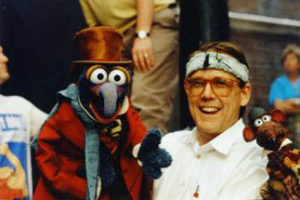
When Dave Goelz started with the Muppets, he came in with the confidence of an industrial designer (which was what he was.) Having never been trained in comedy or puppetry, when stars like Danny Kaye would enter the room he would often exit, feeling he didn’t deserve to share the same space. In fact, Dave famously told me that during the first season of the Muppet Show the cameramen all took Gonzo’s scenes as down time… a time to take a nap. Dave’s Gonzo was always weird, but he was also just very downbeat and kind of depressed during those first few episodes. Frank Oz used to counsel Dave:“Listen. Your job is to be a fool! Go for it!”
Following one of these sessions, Gonzo’s next scene required him to deliver an emphatic “No!” Dave mustered his courage and overdid it. “NOOO!!!” he cried. it earned the character his first belly laugh from the crew.
A light switched on and Dave’s characters took off. Soon, both Gonzo and Dave Goelz became primary characters in the Muppet universe.
The moral of this story is several fold: first when doing comedy go for it… half measures and playing it safe rarely gets the laughs. Second: Less can be more. Dave didn’t need a whole lot of words to earn his laugh. It was the energy and intensity of a single syllable that did it. Lastly, don’t apologize, don’t explain just be a fool and let it rip. The moment earns the laugh as often as the joke itself.
A few specifics and tips about ways to write humorously
If you are going to use humor in your piece there are a couple of things to keep in mind
- Introduce it early
- Make it clear that you are trying to be funny
- Gives permission for your audience to laugh
- Don’t explain the joke. An explained joke is almost never funny.
- It’s a sign the joke didn’t land
- It’s an insult that suggests that your audience isn’t smart enough to get it. If a joke doesn’t land, cut it, or leave it and move on to the next one.
- 100 jokes rule: Mel Brooks believed in rapid fire jokes. If you tell a hundred jokes, but only thirty are funny. The audience leaves remember laughing a lot!
- Be strategic
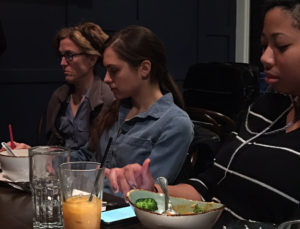
- Good joke writing is rewriting. Edit and test. Some of the best stand-ups try out material for free in local clubs just to refine or see if an idea bombs.
- Punch lines should be shorter, faster and funnier.
- Set ups can be long. Punch lines are quick. Think about it. If a punch is slow then your target has time to dodge.
- Don’t scatter jokes willy-nilly; instead, use them as seasoning to spice the scene or help to define the character. Remember the best comedy serves the story and not the other way around.
- Don’t lose your story’s focus
- The story should come first. Don’t sacrifice plot, tension, conflict and character for a cheap laugh. Your joke or humorous situation should fit the world and the characters you are writing. It should not stop the pace or the action.
- in a really well written script you should theoretically be able to pick a line at random and someone who is familiar with the characters can tell you who says it. Don’t randomly assign a joke to a character. Use it as a way to build the character.
- Punch up not down.
- Taking swipes at defenseless groups is bullying not funny
- Beware of sarcasm
- Better to make fun of yourself
- Watch your references
- Topical jokes may be cliché by the time your reader gets to them
- Topical jokes may be dated or lost to time (Monty Python jokes about Parliament don’t necessarily land with an American audience.)
- If your writing is too authentic in terms of slang or local/foreign color, you may lose readers or force them to stop reading/living in your story in order to try to decipher your meaning.
- Judge the value of the authentic. If a detail helps move the story or is important to the defining the characters, keep it. If it creates too much work for the reader… it may not be worth it.
Types of Jokes:
Exaggeration or fabrication, creative misdirection, observations, comparisons, topical
Use alliteration, percussive consonants, puns, and metaphors. K rule- words with the letter K are funny: Kumquat, Cadillac, sex. Hard G rocks the grins too.
creative misdirection– engaging readers by taking them someplace they don’t expect to go
- THE RULE OF THREE
Writing comedically usually requires establishing a pattern (with the setup) and then misdirecting the reader (with the punch line). One simple way of doing this is to pair two like ideas in a list and then add a third, incongruent, idea.
Repeating a thing three times also fixes in the mind of the reader that a thing is important.
EG: Losing weight is simple: Eat less, exercise more and pay NASA to let you live in an anti-gravity chamber.
- THE CLICHÉ JOKE
If comedy relies on misdirection, what better way to achieve it than with a phrase your readers already know? If you write, “You can lead a horse to water …” every reader will assume you’re going to finish with…
- Comparison:
As writers, we’re comfortable with metaphors, so think of comparison jokes as simply metaphors. The idea is to create a visual that is absurd yet is also imaginable. For example, Leigh Anne Jasheway tells this comparison-based joke.
“… this stupid hospital gown is riding up my ass. I try to pull it down and it snaps right back up like a window shade. I cross my legs and suddenly I’m Sharon Stone.”
If all else fails… pull out the rubber chicken!!!
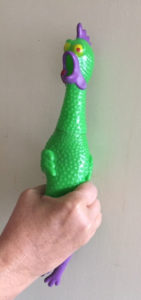
Resources and source material for this blog article:
Cobblestones: Going Gonzo for Jim Henson
https://www.writersdigest.com/online-editor/how-to-mix-humor-into-your-writing- Leigh Anne Jasheway
https://www.writing.ie/resources/the-golden-rules-of-writing-comedy-by-caimh-mcdonnell/- Article by Caimh McDonnell

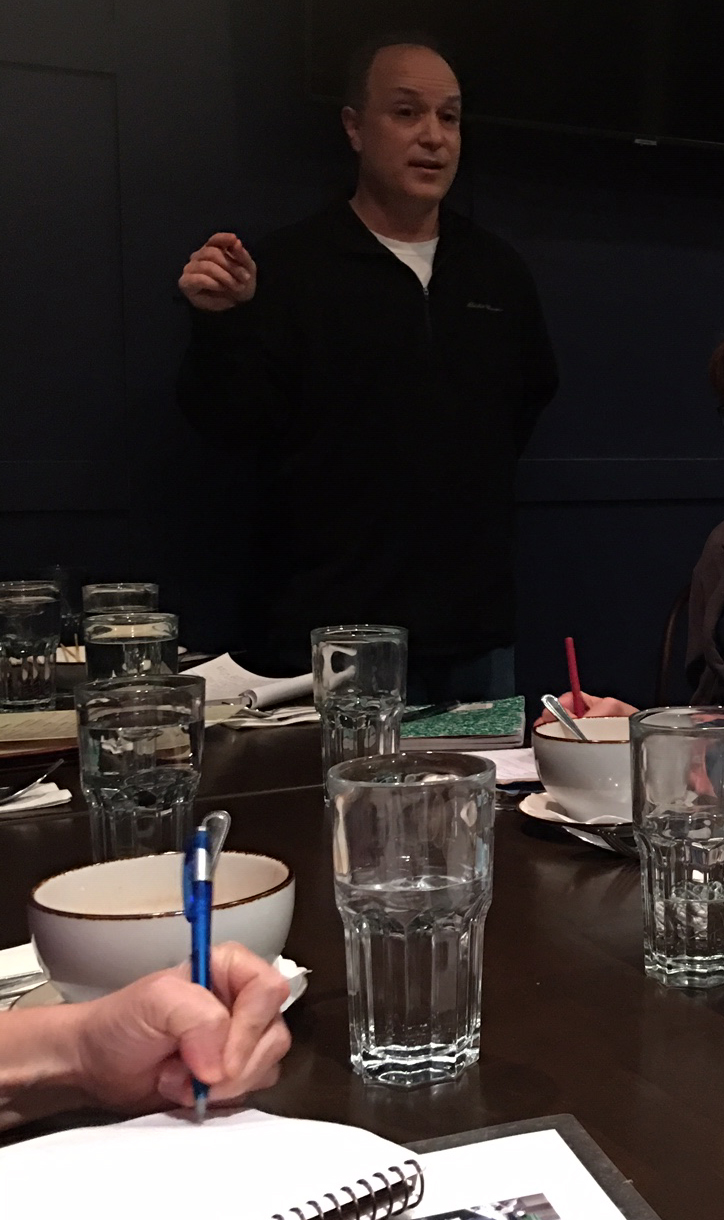


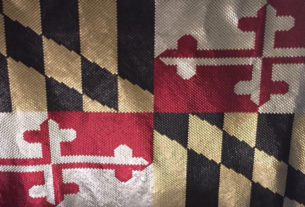
Thanks, that ‘s a great summary. Sorrry I couldn’t make it. You’ve given me incentive to try more humor in my memoir. Dan
Glad you found it useful. I think humor is a great tool to use in all varieties of writing.